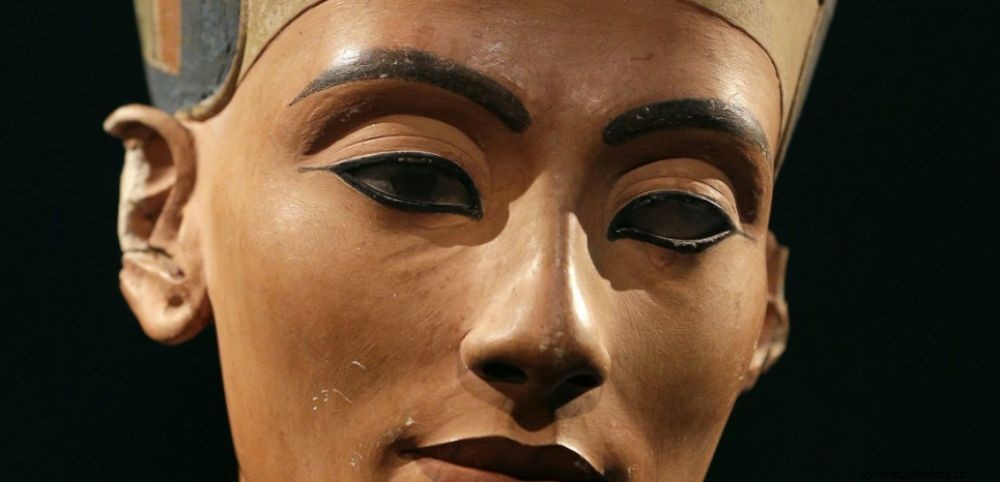 A bust of Nefertiti
A bust of Nefertiti HYPOTHESIS. Has the burial place of Queen Nefertiti, the influential and powerful ruler of Egypt, been for 3300 years in the Valley of the Kings, near Luxor, in a crypt adjoining the tomb of the famous pharaoh Tutankhamun? This is the theory that Sciences et Avenir revealed on August 9, 2015, launched by a renowned Egyptologist, the Briton Nicholas Reeves of the University of Arizona (United States). Information that has gone around the world this summer, so much the discovery of the tomb of a king or queen of Egypt looks like a crazy dream, for any archaeologist and also for the general public in love with Ancient Egypt and its mysteries! A fine player, the Egyptian Minister of Antiquities, Mamdouh el-Damaty, has just offered the British archaeologist to come and discuss his theory with his Egyptian colleagues. "Nicholas Reeves' article cannot be ignored. I have spoken to him on the phone and he will be coming to Egypt in September to check for clues to his 'discovery'" , he recently told the Egyptian magazine Luxor Times . "If I agree with Nicholas Reeves for the possible presence behind the walls of Tutankhamun's tomb of a chamber or another tomb... I do not believe like him that it could be Nefertiti… It might as well be someone else's grave" . A joint expedition could then be organized in Luxor, where the tomb of the famous sovereign is located. Nicholas Reeves indeed thinks that the pharaoh Tutankhamun would have been buried in an emergency in a tomb originally intended for Queen Nefertiti. According to him, at the unexpected death of the young king at the age of 19, - therefore without a tomb prepared to welcome him -, that of Nefertiti would have been reopened and enlarged to receive him.
A misdirected grave
One of the proofs of this reuse? Nicholas Reeves considers that the current tomb of Tutankhamun, whose plan is L-shaped and oriented to the right, was intended for a queen rather than a king. The latter, according to the specialist – who has spent years studying the tombs of the Valley of the Kings – would be buried according to plans oriented to the left. If this hypothesis is correct, the chamber containing the tomb of Tutankhamun – discovered by the English archaeologist Howard Carter in 1922 – would have been built as an antechamber to that of Nefertiti. Which would also explain some oddities about the young king's resting place that have always puzzled researchers. Namely the small size of the tomb and the appearance of the painted decorations. According to Nicholas Reeves, the frescoes that adorn the north wall of the tomb are part of a royal iconographic program prior to the time of Tutankhamun.
The study of the very high resolution images taken in the royal tomb by the Factum Arte company during the production of the facsimile of the tomb of Tutankhamun, now on display 1km away, would have enabled the Egyptologist to discover, under the details of the painting, the traces of two sealed openings, identical to those pierced by Howard Carter at the time of the discovery of the royal tomb in 1922. What could be the next steps? The Egyptian authorities could accept the radar scan of the two walls proposed by Nicholas Reeves. And if there is a cavity, drill a microscopic hole into which a fiber optic camera could be inserted. Then… history will tell.
READ ALSO.
On the trail of Nefertiti, neighbor of Tutankhamun? This is the hypothesis of the famous British archaeologist Nicholas Reeves.
Tutankhamun's beard mired in scandal
Tutankhamun's family tree is not complete
Tutankhamun:the "truth revealed" in a BBC documentary
A perfect copy of Tutankhamun's tomb open to visitors
